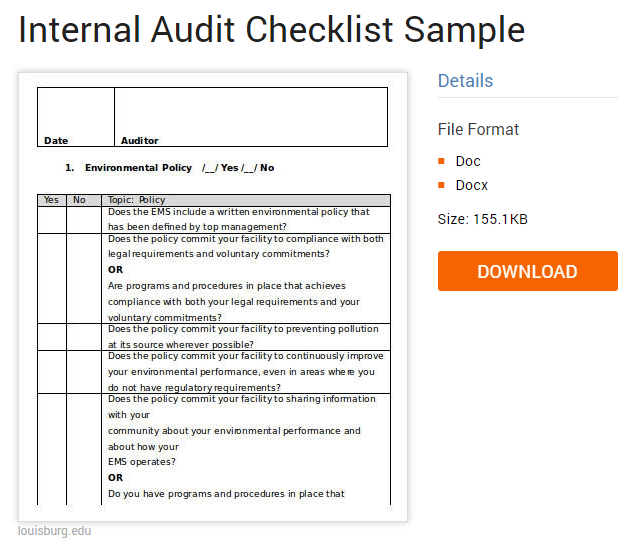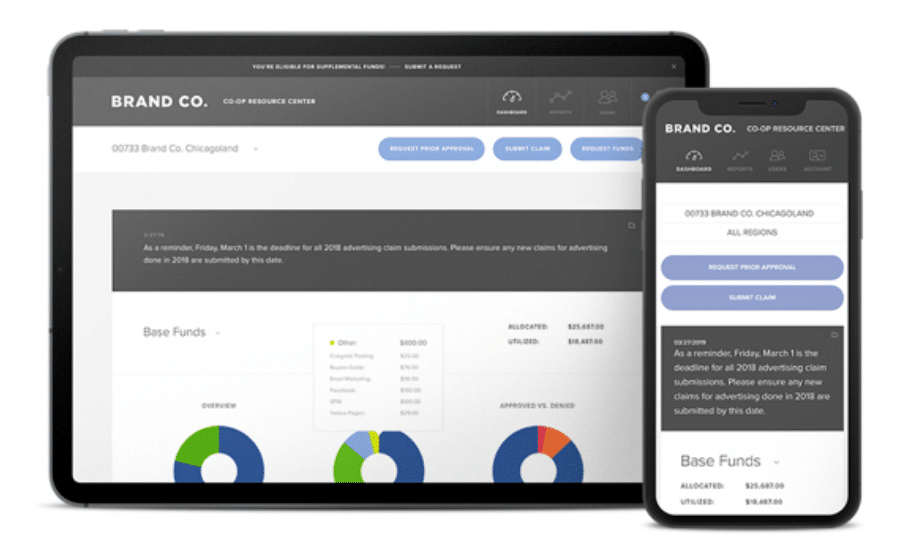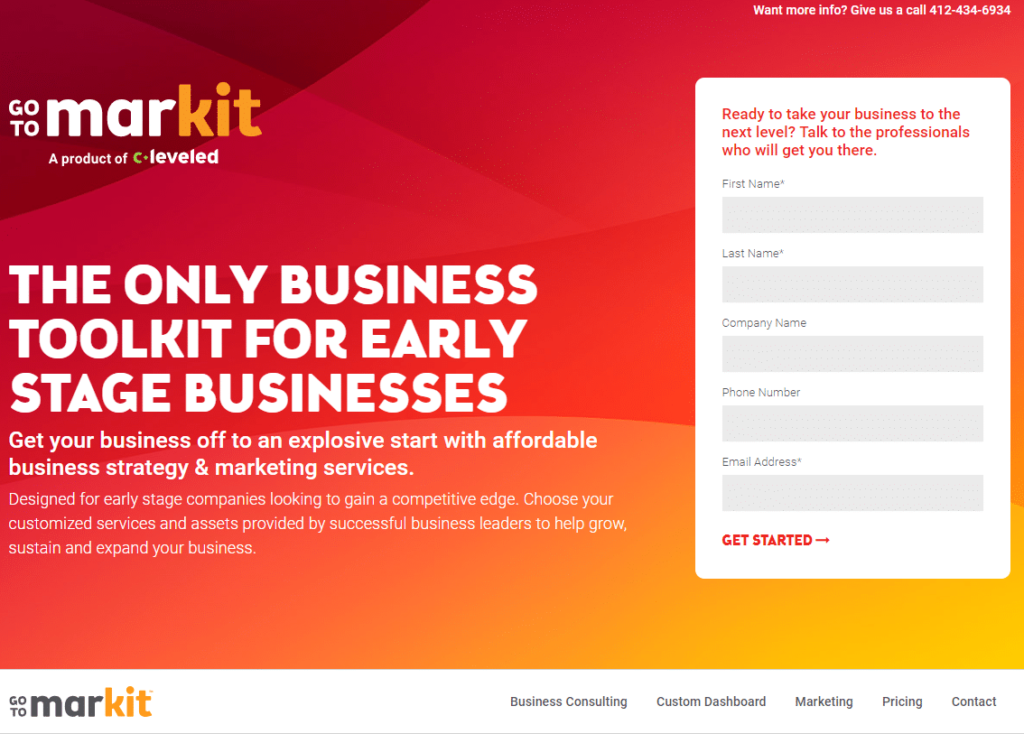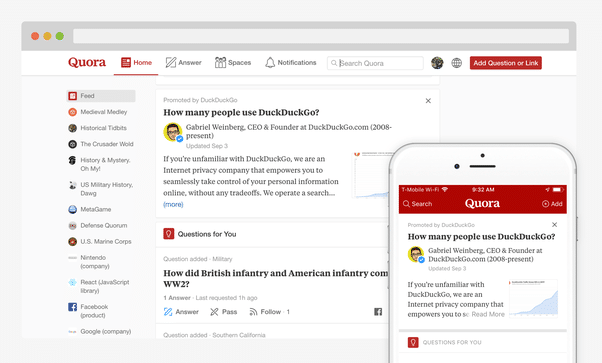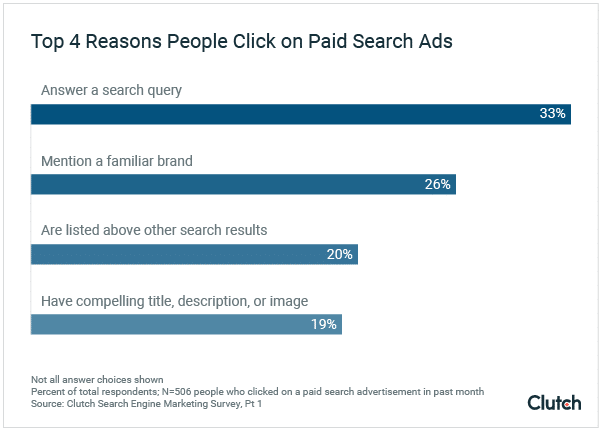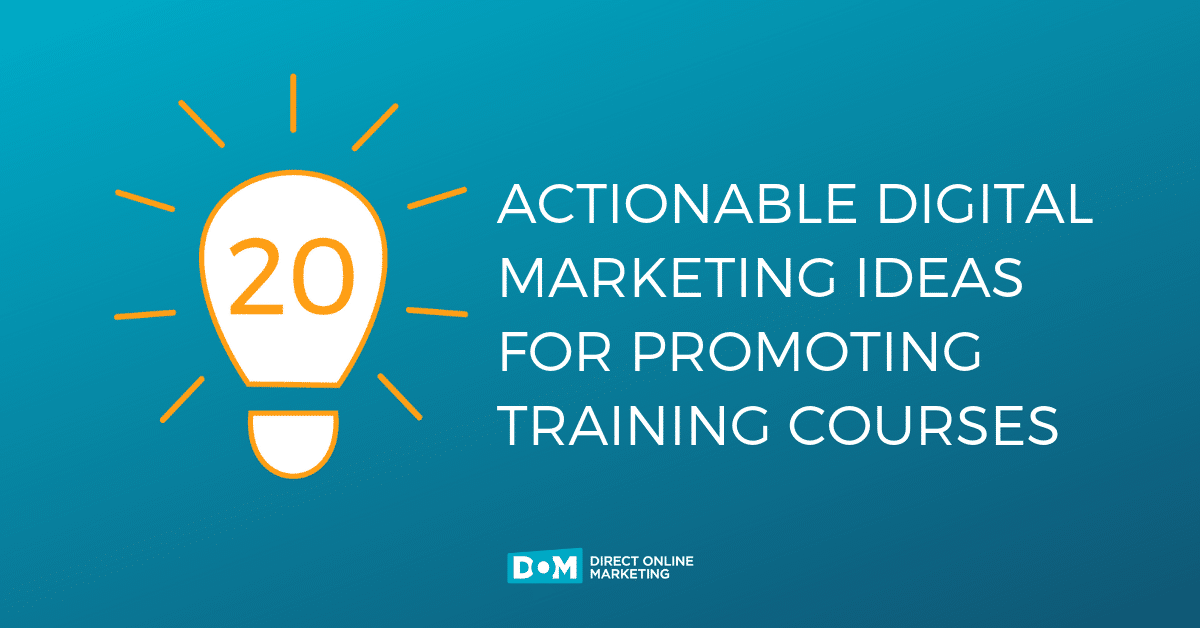
You may have heard the old adage, “Those that can’t do, teach.” Well, if you have been challenged with the task of promoting training courses online, then you know that statement is almost totally false.
There are plenty of things to “do” when you are trying to support a training course with promotion online.
Organizations around the globe invest over $360 billion annually to level up their workforce in areas such as:
- Alignment
- Analytics and Measurement (click this link to learn more about our Google Analytics services)
- Automation and Robotics
- Compliance
- Content Development
- Employee Safety
- Engineering
- IT and Technical Training
- Leadership
- Performance Management
- Sales
- Strategic Planning
Developments in high-speed internet connectivity worldwide in recent years have also provided training companies with the ability to move their teachings online. Now, in addition to building a connection with people in real life, training courses can be consumed (and re-consumed) by students on demand.
Whether your company is creating a new training course or training is what you’ve done for decades, there has never been a better time to get involved in the knowledge sharing economy.
Below, I’ve compiled 20 digital marketing ideas that are both actionable and effective for you to start promoting training courses.
1. Auditing Templates
There are many ways a company might realize their need for your training solutions. Few of those ways are more effective than by giving them a template to conduct a self-audit. Creating auditing templates for prospective clients in Google Drive, Microsoft Office, or PDF format is an excellent way to:
- Help them discover their pain points
- Introduce your methodology to alleviating those pain points
- Provide natural conversation starters for your business development team
Bonus tip: For promoting training courses, you should be willing to provide these templates at no charge to potential clients. But at the same time, you should also gate these templates behind a registration form to aid your demand generation efforts.
2. Best Practice Guides and Tutorials
Employing content marketing—such as best practice guides or in-depth tutorials—allows you to showcase your organization as a thought leader.
Your potential clients likely have continuing education requirements or newly placed industry standards for which they need certification. A decision maker in HR or some other management role may not be up to speed on the new requirements.
The act of creating content serves as an educational opportunity for these people. To help them get the information they need to keep their people at the top of their craft.
Bonus tip: Embed a lot of share buttons on content like this so it can easily be bookmarked, emailed, exported, printed, or shared on enterprise communication platforms like Slack.
Are you launching a training course but also a provider of a software solution? Need more leads? We’ve got you covered with 14 more ideas just like the one above in this post… 15 Actionable Lead Generation Ideas For Software Companies
3. Blogging As A Tactic For Promoting Training Courses
Companies interested in growing their brand awareness through search engines should be creating at least one new piece of blog content per week. And yes, this applies to any company, regardless of industry.
Companies in the training industry are no different. In fact, regular blogging might be even more critical in the training industry. A higher amount of knowledge sharing should mean a more significant percentage of thought leadership.
Bonus tip: No matter your preferred communication medium, plan on creating a blog post that is at least 300 words in length once every five business days.
4. Case Studies To Promote Training Courses
Whether you provide training services to individuals or groups, what you do has an impact on the people you help level up. Let the results of your work speak for themselves by creating case studies to showcase your greatest successes.
In both personal and corporate training, people want to get the sense that you, specifically, can help them in their “unique situation.” Training companies should focus their case studies around the types of people and companies they want to attract to their business.
Are you a personal development company that wants more married businessmen as clients? Make a case study featuring one!
Do you have a leadership training course for the financial sector? Build a case study featuring employees from any of the “Big 5” accounting firms.
Bonus tip: Want to acquire visits from keyword searches to your case studies? Optimize the title tag, URL slug, and case study title in the following manner. Check out this example data set for this case study from OppenheimerFunds.
- Title: Oppenheimer Training Program: Custom Training To Identify Growth Companies
- URL: /case-studies/oppenheimerfunds/
- Case Study Title: OppenheimerFunds Improves Growth Company Identification By 80% After Training
5. Checklists and Worksheets
Checklists and worksheets are effective marketing assets to create. When they are optimized through SEO or supported through digital advertising, they can also be a high ROI item to drive sales leads into your pipeline.
One thing to remember about creating checklists and worksheets is that they can become outdated over time. This is especially true in industries where standards or regulations evolve over time. Training companies in education, government, healthcare, IT and legal will want to be mindful of this.
Bonus Tip: Create an interactive document that can be bookmarked in a browser and regularly revisited by your users. Is interactivity not possible? Host your checklist or worksheet as a branded Google Sheet for users to copy to their own Google Drive accounts.
6. Competitor Awareness
Whether you want to go toe-to-toe with an industry leader or you want to solidify your brand’s dominance, consider creating content about your competition. This is a high-value SEO and content marketing strategy for your brand if it classifies itself as a “challenger” in your industry.
Create pages of content on your site that either:
- Directly compare your training courses to the market leader and niche brands
- Identify a shortcoming of the services provided by your market leader/niche brands
- Offer an influencer the opportunity to compare you against your competitor as a guest post
Then proceed to highlight the strengths and unique value your training courses offer compared to your competition.
Bonus Tip: To promote training courses, pages like this allow your site to rank organically in keyword searches. You can also run digital advertising campaigns for keywords towards the end of the buyer’s journey like “Dale Carnegie alternatives” and “skillsoft vs mindgym.”
7. Digital Market Development Funds
“Integration and usage of technology in our day-to-day lives is at an all-time high, as we continue to shift to a ubiquitously digital world,” said Brian Fourman of Cooperate Marketing, a marketing agency in Chicago that solves complex problems for OEM’s and major service providers.
Some of the latest research by Nielsen, ComScore and other indicates that Americans spend close to 11 hours a day consuming media and nearly four hours of that consists of some form of digital across any number of platforms.
For marketers that have access to digital Market Development Funds (MDF’s), adopting a digital-first strategy can prove to be highly beneficial. Not only is a portion of your digital campaign already paid for with MDF’s, but when implemented correctly you can hyper-target your intended audience to convey the right message, at the right place, at the right time in a truly engaging and often personalized fashion. Plus, the cost of entry is significantly less than traditional media in which one is often forced to purchase the entire market (DMA).
Digital first strategy allows you to run any number of campaigns simultaneously to fulfill key marketing objectives at each level of the purchase funnel, whether to build brand awareness, familiarity, consideration, and/or to generate leads and convert them into sales. In addition, digital media allows for easy-to-implement message testing (A/B) that can be modified on the fly.
Copious amounts of readily available data further support your customized endeavor and provide quantifiable results that can easily be tracked. By knowing how to interpret and use this data, you can optimize current/future campaign creative to provide truly impactful results that guarantee the greatest ROI.”
8. Email Newsletter Sponsorship
Sponsoring email newsletters is a great way to infiltrate the inboxes of a significant number of highly targeted readers without the need to be CAN-SPAM compliant.
That doesn’t mean this tactic lacks strategic thinking. When you select an email newsletter to sponsor, here are three things to keep in mind:
- Target professional organizations or networking groups of the industries you help train.
- Have those organizations prove how engaged their readers are with data. You don’t want to just buy a list!
- Create an exclusive offer to maximize engagement and conversions with your ad.
Bonus Tip: Support your exclusive offer or sponsorship of an email newsletter by creating a specific landing page for it. Extend the reach of your offer by applying SEO best practices and adding retargeting codes to the page for Bing, Google, Facebook, Instagram, LinkedIn, and Twitter.
9. Expert Roundups
You might be tired of reading “expert roundups”—but your target clients can’t get enough of them. Long list articles of helpful hacks, hints, tips, and tricks exist on nearly every business strategy out there.
Expert roundups—whether published on your site or elsewhere on the web—are a great way to improve the personal brand of your training team members. Additional benefits include:
- Increased thought leadership opportunities for your brand
- Increased visibility for your content on social networks
- Increased traffic and backlinks for expanding your SEO efforts
Bonus Tip: Need to find expert sources for your first roundup besides your own training team? Signup for a journalist/blogger account on Help A Reporter Out (HARO). HARO is a 3x per day newsletter sent to over 800K sources looking for opportunities to get media coverage.
10. Giveaways and Sweepstakes
Who doesn’t like getting something for free?!
When promoting training courses, letting potential students “try before they buy” can be an irresistible way to draw them in. Simply give them access to one session, program, or class at no cost.
Sweepstakes work in a similar fashion. However, instead of giving away your intellectual property, you will be packaging something together to entice future students to give you their contact information.
One disadvantage of this strategy is that you risk receiving a large number of registrants that may not result in quality sales opportunities.
Bonus Tip: Promote your giveaway or sweepstakes in a press release or by providing exclusive demos to bloggers and other online publishers. Don’t forget you can also shamelessly promote training courses in your outreach, too! You can tap into their follower counts and subscribers for leads while also earning high-quality backlinks to your domain.
11. Historical Optimization
Over the last few years, historical optimization has become an incredibly valuable SEO strategy for companies with a large archive of content.
To briefly summarize this tactic, find an old blog post (published six or more months ago) on your site that either:
- Generates a lot of traffic (good idea), or
- Converts (better idea)
Then refresh the content and re-publish it with a more recent date.
Establishing your trainers as thought leaders are critical to your success in promoting training courses. Historical optimization is a great way to get long term value out of content you published long ago.
Bonus tip: Have trainers who used to blog for your organization that are no longer there? Create a general author account on your blog using your company name, like “(Company Name) Team.” Change the author of a post if they are no longer a part of your team to that author.
Historical Optimization helped Corporate Visions improve their lead generation by 37% from SEO.
Learn more here.
12. Influencer Marketing
Influencer marketing has had a ton of hype over the last year, as well as a lot of unwanted attention. Despite that surplus of hype floating around, a dedicated influencer campaign has a lot of potential.
If your company can partner with influencers on social media to increase awareness amongst a large fan base, the CPM can be very effective compared to traditional media buying. Just make sure that any influencer you invest in actually motivates their followers and fans to act.
Creating an exclusive offer for any influencer will be vital to seeing success with a campaign of this type.
Bonus Tip: Check out this comprehensive beginner’s guide to influencer marketing if you want to learn more about how to leverage this for your organization.
13. Infographics To Promote Training Courses
Infographics still have a place in the world of digital marketing, especially since most people still do not enjoy reading online.
If your company conducts its own original research or surveys, share your best statistic or a quotable statement in this visually appealing format. Engagement with your content and the likelihood that your target students remember what you wrote will undoubtedly improve.
Bonus Tip: Create a high-resolution copy of your infographic for companies that want your content as posters for their walls. You could sell them to take advantage of a non-traditional revenue stream or offer the high-res version as a piece of gated content.
14. LinkedIn Advertising
Don’t let LinkedIn Learning’s existence (formerly Lynda.com) scare you from the possibility of leveraging the most extensive professional social network to promote your training courses.
According to a case study from LinkedIn, e-learning solution provider, CrossKnowledge launched display ads, InMail, and sponsored updates for a campaign titled “Bye Bye Boss” in 2015.
The results?
“Benchmark-beating” click-through rates and over 50 leads generated on the campaign microsite.
Bonus Tip: No matter what platform you use for your landing pages, take advantage of LinkedIn AutoFill for your form fields. With the click of a button, visitors can become leads by populating your form with their LinkedIn profile information.
15. Microsite Development
“The use of microsites provides the perfect launchpad for new services,” says Denise DeSimone, Chairperson of C-Leveled, a full-service branding strategy and marketing agency.
Update: On April 21, 2022,
we announced our
acquisition of C-Leveled.
“Microsites are quick and easy to build, so they give you the ability to target particular audiences quickly. In some cases, microsites can be as much as five times more effective in generating leads than traditional campaigns.”
Bonus Tip: Optimize your main site and microsite for similar keywords, and support each site by targeting those keywords in a PPC campaign. Doing this allows presents an opportunity to occupy a minimum of 25% of a search engine results page.
16. Podcast Interviews To Promote Training Courses
Participating in podcast interviews is another opportunity for your talent and training staff to showcase their thought leadership.
But have you ever thought about hosting your own podcast? Podcasts have low production costs and listenership is rising. Plus, podcast listeners have over four times better brand recall on ads than traditional display campaigns.
Bonus Tip: If you host your own show, invite guests on your show who could be potential sales leads. In the training industry, consider hosting executives in HR or with specialization in companies you want as clients.
17. Quora Promoted Answers
Quora Promoted Answers are a relatively new advertising option on this quickly emerging platform.
You can reach a broad group of people on Quora who are researching questions and answers related to your area of expertise with a Promoted Answer.
For training companies who are already familiar with answering questions on Quora, you might not notice anything different in how you find places to share your insights.
What changes in a Promoted Answer? Two things:
- The label next to the answer (Promoted By).
- The name of the person and the business promoting the answer.
Bonus Tip: Has someone unaffiliated with your company answered a question on Quora that helps in promoting training courses offered by your company? Promote that answer instead of yours to get it shown to more people in any feed.
Interested in leveraging Quora for your SEO efforts? Find out if Quora can help your SEO efforts here.
18. Research and Surveys
If you want to make the case for your training solutions to potential clients, there may not be a better way to do that than by conducting research or surveys.
Do your clients have a common pain point they need addressing when they hire you? They probably are not alone.
Survey executives in your industry related to the common pain point your clients have. Then publish the results of your survey in a whitepaper or other type of report.
Then, do a press release about your research (and promoting training courses) and share it with the trade publication media in your industry for increased visibility.
Bonus Tip: Don’t forget to send the report you create to everyone who submits an answer to your survey.
19. Retargeting To Promote Training Courses

It doesn’t matter what you call this—remarketing, cyberstalking—it’s a crawesome (creepy + awesome) marketing tool.
Reach the 99% of visitors to your website that didn’t convert by retargeting them with display ads. You can use this strategy in search engines, display ads, social networks, and mobile apps.
Talk about creepy and awesome!
Bonus tip: If your training solutions require a long sales cycle, make sure you have your audience list set to as long a time period as possible prior to the start of promoting training courses.
20. Webinars To Promote Training Courses
If you are in the training business, then you likely have some comfort with public speaking. Leveraging live, web-based video conferences will be different than being in person with your clients, for sure. But it is a great way to connect with your target audience at scale, at any time they want to consume your training.
Best of all, if you host a webinar, your message can reach an audience of viewers and listeners from all over the world.
Bonus tip: It’s okay to put your webinars behind a gated form, but make sure the video content can be made available on demand. In today’s competitive business climate, you don’t want to make people wait to hear your training when there are others out there.
Final Thoughts On Promoting Training Courses Online
Like many lucrative industries that are both knowledge and skills-based, promoting training courses effectively in today’s marketplace requires agility, consistency, and a little bit of luck.
This is true whether you are looking to go to market with a new training course, or you are part of an established training company looking to elevate your status.
Luckily, no matter what actionable digital marketing strategy you choose to promote your training course, they all can help you accomplish the following:
- Disrupt the market leader who is slow to take action
- Generate leads for your programs and direct sales
- Improve your company’s authority and thought leadership positions in your industry
- Increase awareness of your brand and programs through more web traffic
- Provide instant and long-term value to your most coveted buyers
You already know now is the time to increase your market share of the $360 billion training industry. If you need help from an online marketing agency to decide which strategy is the best to start snagging your share, just contact us.
